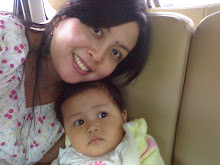Fontanels
| The soft spot on top of a baby’s head is the area where the skull bones have not yet fused together. The little gap, which varies in size with all babies, allows the rapidly growing brain to expand during the first 18 months, which time it will gradually close. The soft spot is not delicate or painful to touch. The brain is well protected by a tough membrane, so it is impossible to cause any injury with you are bathing or brushing your baby’s hair. |
Baby’s Head
| Your baby’s head may appear a slightly unusual shape due to the pressure caused in the birth canal – don’t worry as this is quite normal and only temporary. Also your baby’s head will be quire heavy in proportion to the rest of its body and their neck muscles will have very little strength so their head will be appear rather wobbly. It’s therefore very important to remember to support your baby’s head carefully when you are carrying her in your arms or when using a baby carrier. |
Cradle Cap
| Also known as infantile seborrhea dermatitis, cradle cap appears as dry white or yellow scales that form a hard crusty cap on your baby’s scalp. It happens because young babies can regulate oil secretion. When to much oil is produced it dries and flakes off. Cradle cap shampoos are available from the chemist, but a little baby oil or cooking oil applied to the scalp overnight, then gently scarped off with a comb and washed thoroughly the next day will usually shift the scaly area. |
Baby's Eyes
| Many babies often develop ‘sticky eye’ after birth, often seen as thick mucus material around the eye. Caused by a blockage of the tear duct, sticky eye can be generally cleared by keeping the eye area clean. Dip a piece of cotton wool into cooled boiled water and gently wipe your baby’s eye from the inner corner outward. Ensure to use a different piece of cotton wool for each eye. If the eyes become red and the problem persists consult with your doctor. |

No comments:
Post a Comment